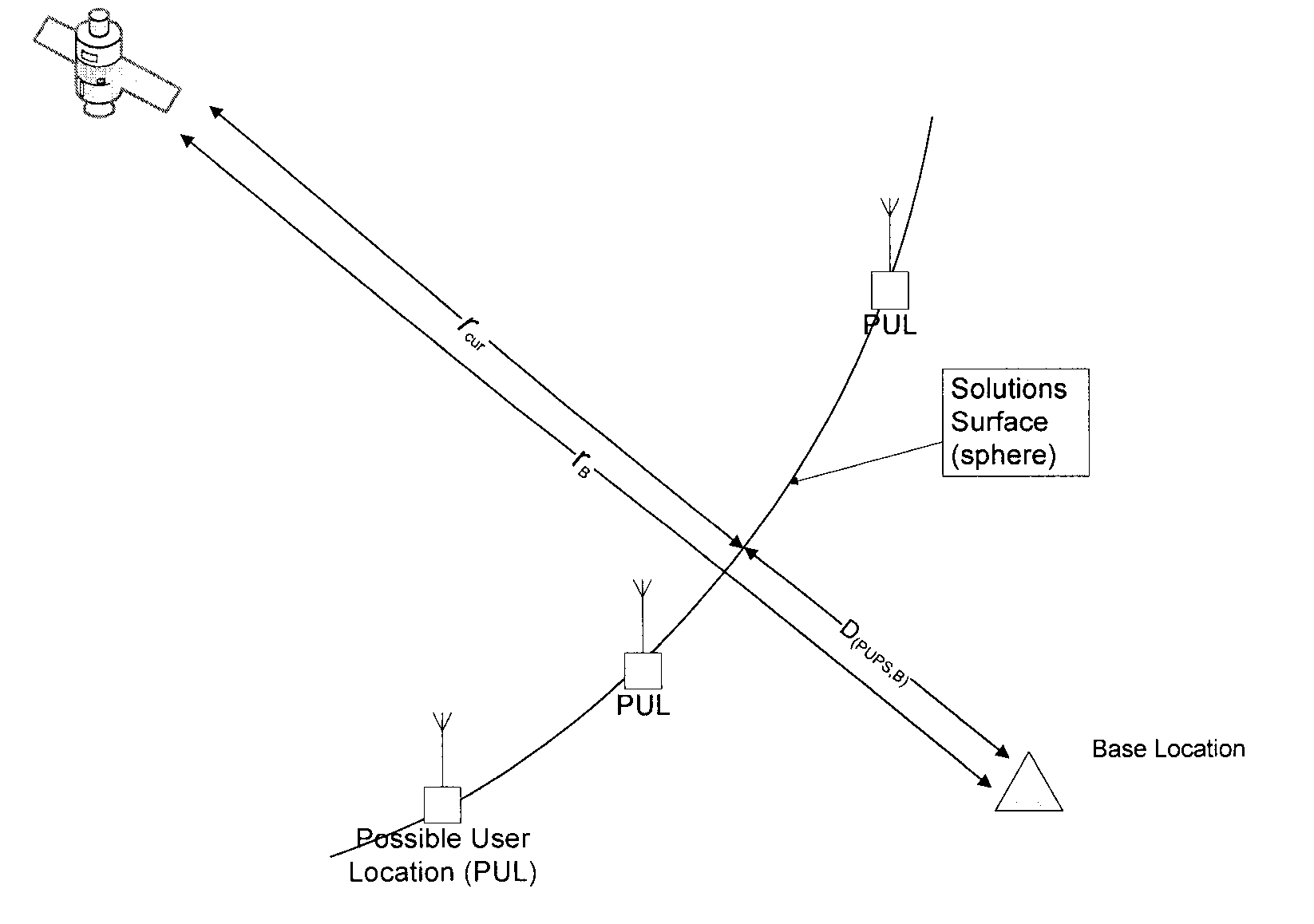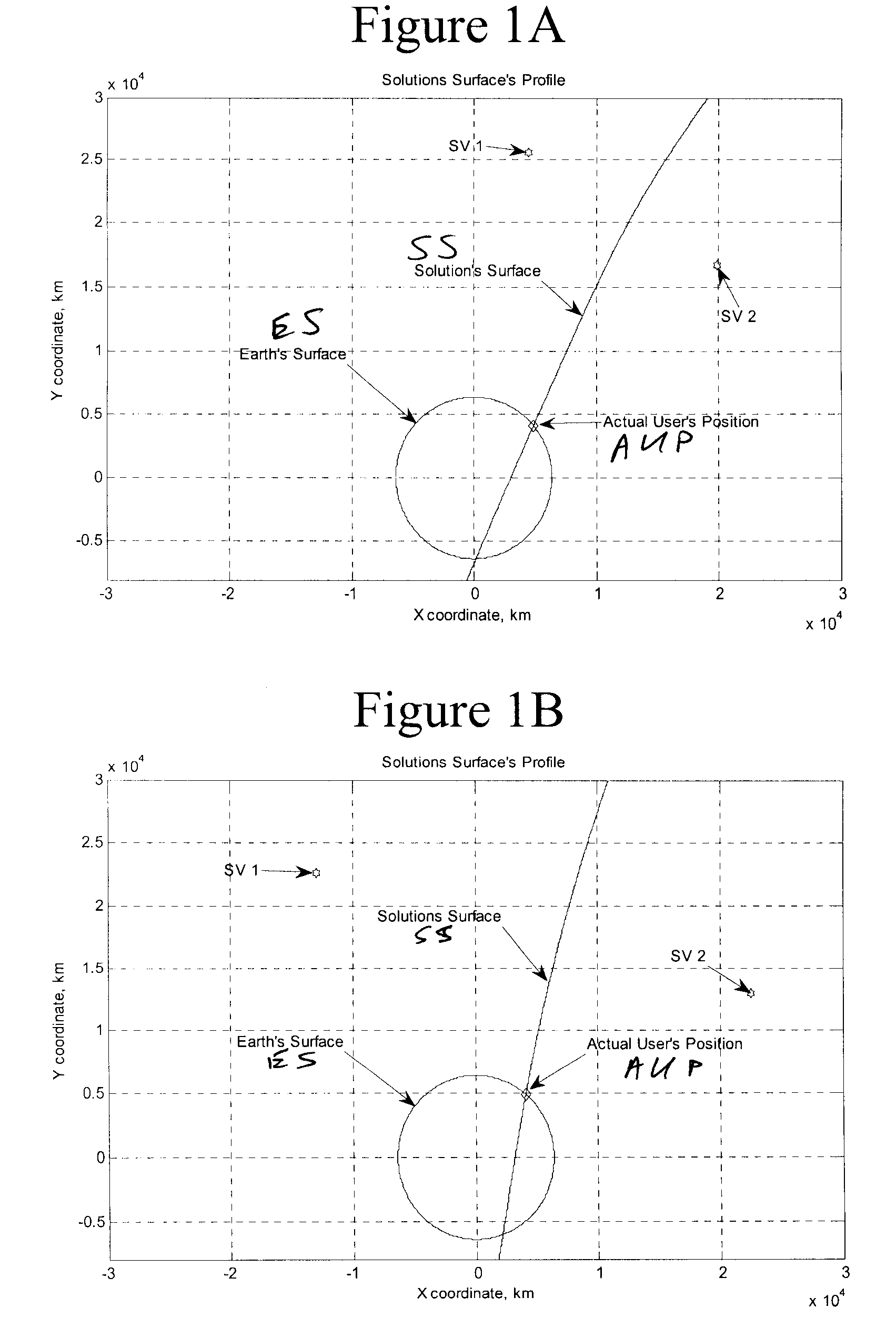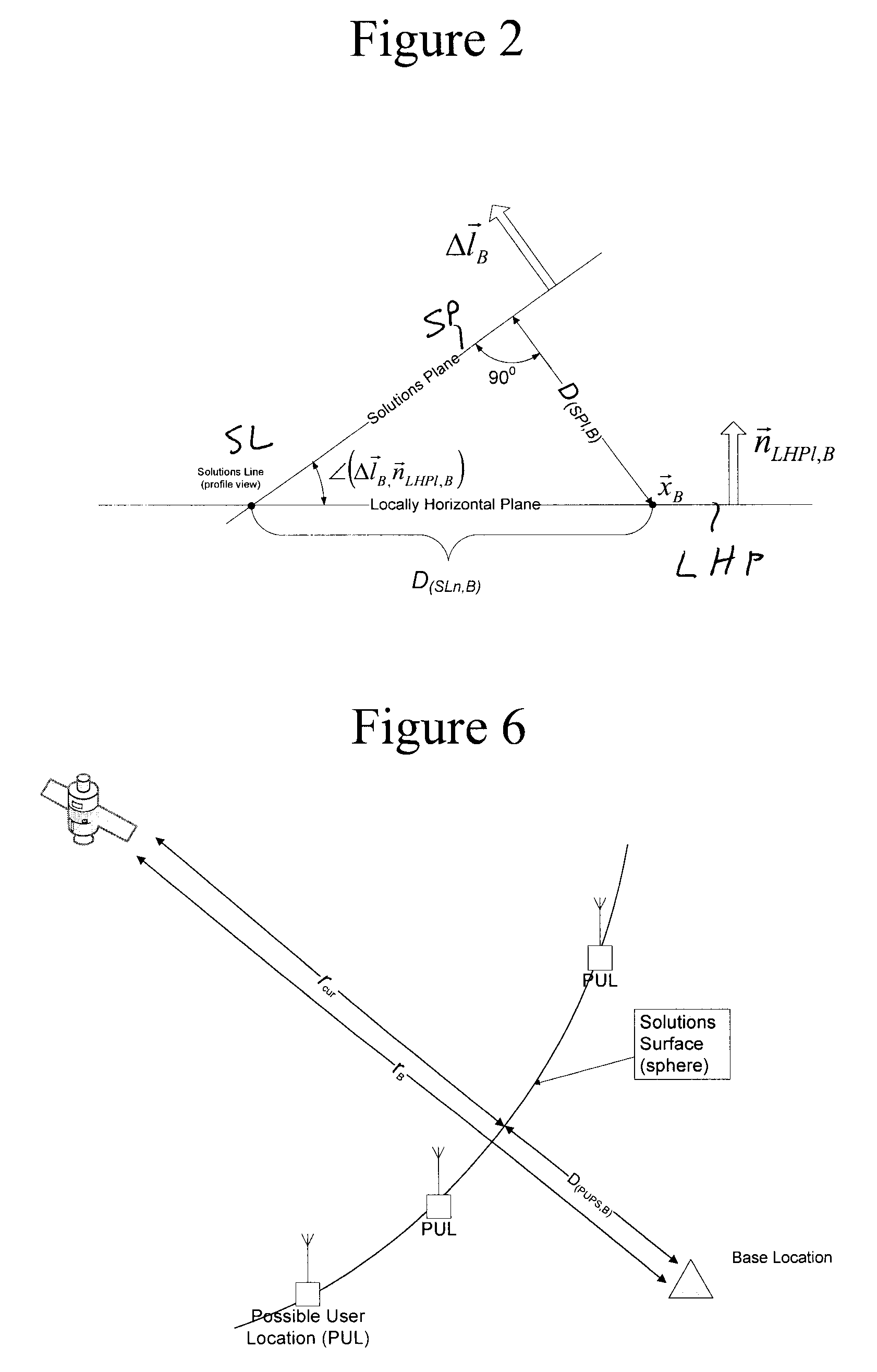Geofencing and route adherence in global positioning system with signals from fewer than three satellites
- Summary
- Abstract
- Description
- Claims
- Application Information
AI Technical Summary
Benefits of technology
Problems solved by technology
Method used
Image
Examples
Embodiment Construction
[0054]Preferred embodiments of the invention will now be set forth in detail with reference to the drawings, in which like reference numerals refer to like elements throughout.
[0055]In a first preferred embodiment, the distance is determined to a user position on a plane in the case of two satellites and a GPS receiver with a standard clock. The basic GPS fix equation can be written as:
{ρi+ri+bU|i=1, 2, . . . NS} (E10)
[0056]where
ri=|{right arrow over (x)}S,i−{right arrow over (x)}U|=√{square root over (({right arrow over (x)}S,i−{right arrow over (x)}U)·({right arrow over (x)}S,i−{right arrow over (x)}U))} (E20)
[0057]In Cartesian coordinates the equations in (E10) will take the following form:
ρi=(xS,i-xU)2+(yS,i-yU)2+(zS,i-zU)2+bU(E30)
[0058]Here ρi are known measurements, {right arrow over (x)}S,i are computed from GPS navigation and observation data values, and {right arrow over (x)}U and bU are unknowns.
[0059]With two satellites in view, equation (E30) is a pair of dependent equ...
PUM
 Login to View More
Login to View More Abstract
Description
Claims
Application Information
 Login to View More
Login to View More - R&D
- Intellectual Property
- Life Sciences
- Materials
- Tech Scout
- Unparalleled Data Quality
- Higher Quality Content
- 60% Fewer Hallucinations
Browse by: Latest US Patents, China's latest patents, Technical Efficacy Thesaurus, Application Domain, Technology Topic, Popular Technical Reports.
© 2025 PatSnap. All rights reserved.Legal|Privacy policy|Modern Slavery Act Transparency Statement|Sitemap|About US| Contact US: help@patsnap.com



